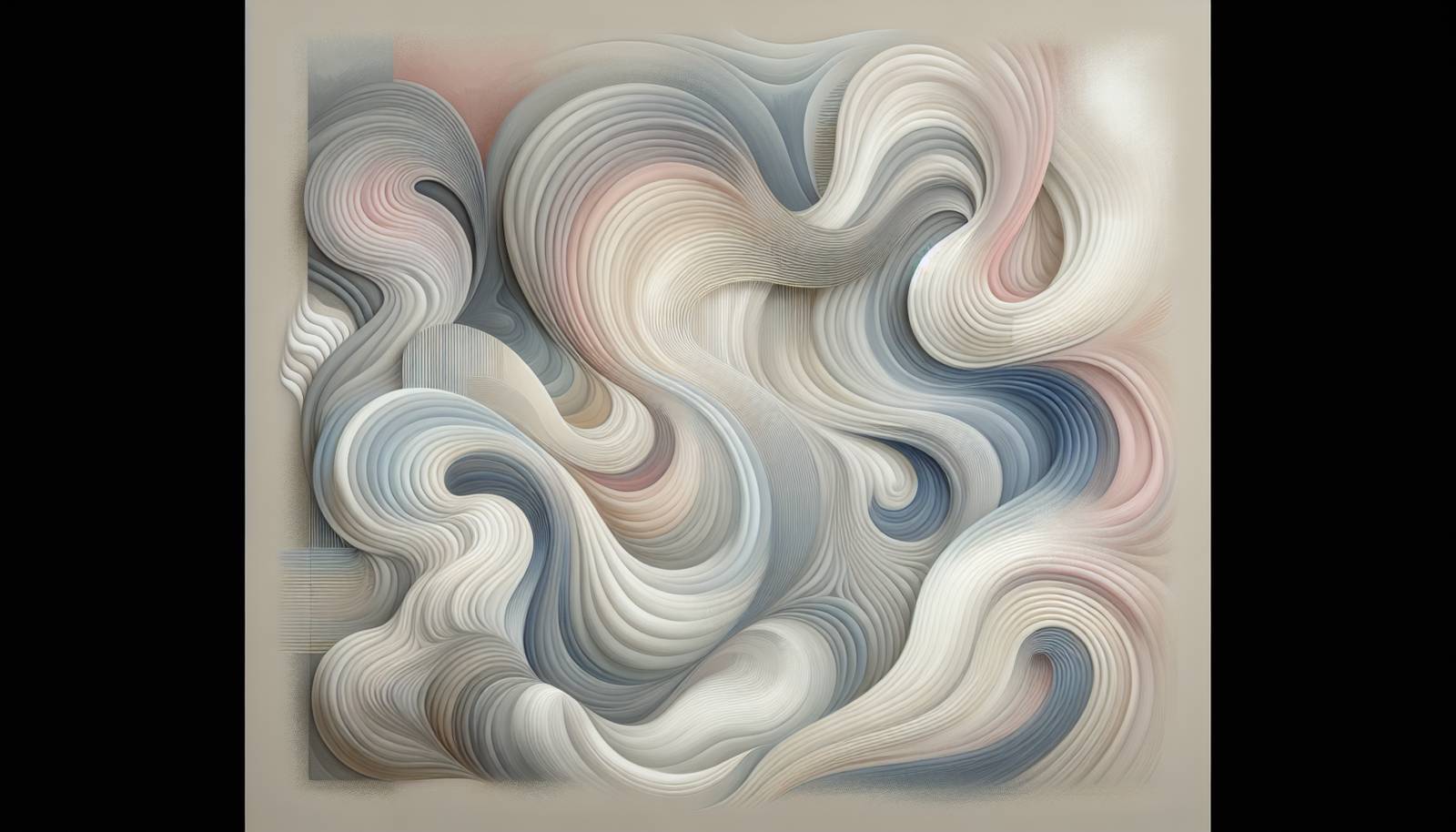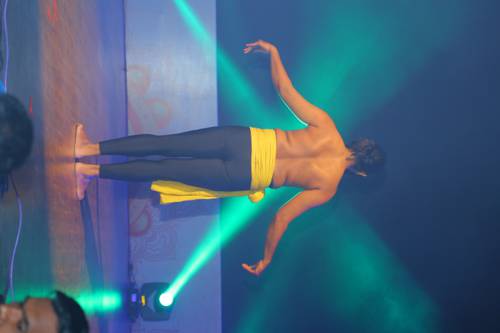
FAQ About The Impact of Mime on Visual Performance Art

What is mime and how is it defined in visual performance art?
Mime is a form of visual performance art characterized by the expression of narrative and emotion through body movements, gestures, and facial expressions without the use of speech. It is a powerful medium of storytelling, allowing performers to convey complex themes and emotions solely through physical articulation. Mime artists often use exaggerated movements and are skilled in creating the illusion of objects, space, and action to engage the audience's imagination.

How did mime originate and develop over time?
Mime's origins can be traced back to ancient Greek and Roman theater, where performers used gestures to compliment the spoken word in dramatic presentations. Throughout history, mime evolved, notably in the commedia dell'arte tradition during the Renaissance in Italy, where performers used physical comedy and improvisation. The art form was refined in France in the 19th and 20th centuries by artists like Étienne Decroux and Marcel Marceau, who significantly shaped modern mime techniques.

What are the key elements of mime in performance?
The key elements of mime include exaggerated body movements, facial expressions, and gestures that convey a story or emotions without speech. Mime often incorporates illusionary techniques to simulate interaction with imaginary objects or environments, requiring high precision and control from the performer. These elements are designed to communicate with the audience on an intuitive and emotional level.

How has mime influenced modern theater?
Mime has profoundly influenced modern theater by emphasizing the importance of physical expression and non-verbal communication in storytelling. Directors and actors often incorporate mime techniques to enhance the depth and realism of their performances. The focus on physical storytelling has also led to the development of new theater forms like physical theater and movement-based acting techniques.

What role does mime play in contemporary performance art?
In contemporary performance art, mime continues to be a vital tool for artists exploring new and abstract ways of storytelling. It provides a means to transcend language barriers, appealing to a global audience. Mime techniques are often integrated into various performance genres such as dance, puppetry, and multimedia installations, enhancing the expressive potential of these forms.

Who are some of the most influential mime artists in history?
Étienne Decroux and Marcel Marceau are two of the most acclaimed mime artists in history. Decroux, known as "the father of modern mime", developed the technique of corporeal mime, focusing on the physical articulation of ideas. Marcel Marceau popularized mime worldwide with his iconic character Bip the Clown, showcasing mime’s emotional depth and creative storytelling potential.

What is the significance of Marcel Marceau in the history of mime?
Marcel Marceau is a pivotal figure in the history of mime, renowned for his character Bip, who became a symbol of the art form. Through his performances, he showcased the expressive power of silence, elevating mime to international recognition. Marceau expanded the boundaries of mime by demonstrating its ability to convey deep human emotions and universal themes, influencing countless performers and contributing to the art form's evolution.

How does mime differ from other forms of non-verbal performance art?
While mime is a specific form of non-verbal performance that emphasizes storytelling through physical movement and facial expressions, other non-verbal arts, like dance or pantomime, may incorporate music and dialogue or focus on the aesthetic and rhythmic aspects of movement. Mime uniquely prioritizes narrative and emotional expression without reliance on sound, often involving imaginative interaction with the environment.

In what ways has mime influenced film?
Mime has influenced film significantly, especially in the silent film era, where actors like Charlie Chaplin and Buster Keaton incorporated mime techniques to convey comedy and drama visually. Modern filmmakers use mime techniques to enhance physical storytelling and character expression, often employing mime artists to train actors in non-verbal cues and expressive movements.

Are there any famous films or scenes known for mime techniques?
The silent films of Charlie Chaplin, such as "The Kid" and "City Lights", are renowned for their use of mime techniques. Chaplin skillfully used physical comedy and mime to tell intricately emotional stories without dialogue, showcasing the enduring power of non-verbal performance. Modern films like "The Artist" have also paid homage to silent cinema and mime's influential role in film history.

What is corporeal mime, and how does it differ from traditional mime?
Corporeal mime is a form of mime developed by Étienne Decroux that emphasizes the physical articulation of abstract ideas and emotions through the body. Unlike traditional mime, which often involves invisible object play and comedic elements, corporeal mime focuses on the body's expressive potential to communicate complex narratives without relying on pantomime or illusionary techniques.

How does mime overcome language barriers in international performances?
Mime effectively overcomes language barriers as it relies entirely on visual and physical expression to convey its narrative, making it universally understandable without the need for translation. By using body language and emotion-rich gestures, mime can communicate complex stories and emotions to audiences worldwide, transcending linguistic and cultural differences.

Can mime be incorporated into other forms of performance art like dance or puppetry?
Yes, mime can be seamlessly integrated into other performance art forms like dance, puppetry, and even multimedia installations. By incorporating mime techniques, these art forms gain a richer expressive vocabulary, allowing for more dynamic storytelling and the ability to convey emotions and narratives without verbal explanations. This fusion often results in innovative and captivating performances.

What are common misconceptions about mime?
A common misconception about mime is that it is solely comedic or limited to street performances. In reality, mime is a sophisticated art form with a rich tradition of theatrical and dramatic expression. Another misconception is that mime is simply silent acting, but it involves a high level of skill in physical articulation and illusion.

How do mime artists train to master their craft?
Mime artists undergo rigorous training to master their craft, focusing on body control, expression, and movement precision. Training often involves studying techniques from influential figures like Étienne Decroux and Marcel Marceau. Artists practice exercises to develop physical strength, flexibility, and the capacity to convey emotions non-verbally, often incorporating elements of dance, acrobatics, and theater in their training regimes.

How is mime used in teaching and education?
Mime is utilized in education to enhance learning experiences by fostering creativity, improving body awareness, and developing communication skills. It encourages students to think critically about physical space and expression, improving their ability to interpret and understand non-verbal communication. Mime exercises are often incorporated into theater education programs to train aspiring actors in physical storytelling techniques.

What are some of the challenges faced by mime artists today?
Mime artists today face challenges such as the need to innovate within traditional mime frameworks and the struggle for mainstream recognition in a highly verbal-centric entertainment industry. They must also overcome audience misconceptions and work to demonstrate the depth and versatility of mime. Additionally, with shifting cultural interests, mime artists continuously adapt their performances to resonate with contemporary audiences.

How has technology influenced modern mime performances?
Technology has significantly influenced modern mime performances by offering new tools and mediums for expression. Mime artists now incorporate digital projections, interactive media, and soundscapes to enhance and expand traditional performances. These technological elements allow for more immersive and visually captivating presentations, creating a multidimensional storytelling experience that attracts diverse audiences.

Are there any notable mime festivals or events around the world?
Several notable mime festivals celebrate the art form globally, such as the London International Mime Festival in the UK and the Festival Mimos in Périgueux, France. These events showcase both traditional and contemporary mime artists and provide a platform for experimentation and performance exchange, highlighting the art's diversity and cultural significance.

What are the future prospects for mime as an art form?
The future prospects for mime are promising, with continued interest in non-verbal storytelling and the integration of new technologies and interdisciplinary approaches. As diverse, global audiences seek novel and meaningful artistic experiences, mime's universal language and timeless appeal ensure its enduring relevance. By continuously evolving and redefining itself, mime has the potential to expand its influence across various artistic and cultural domains.
